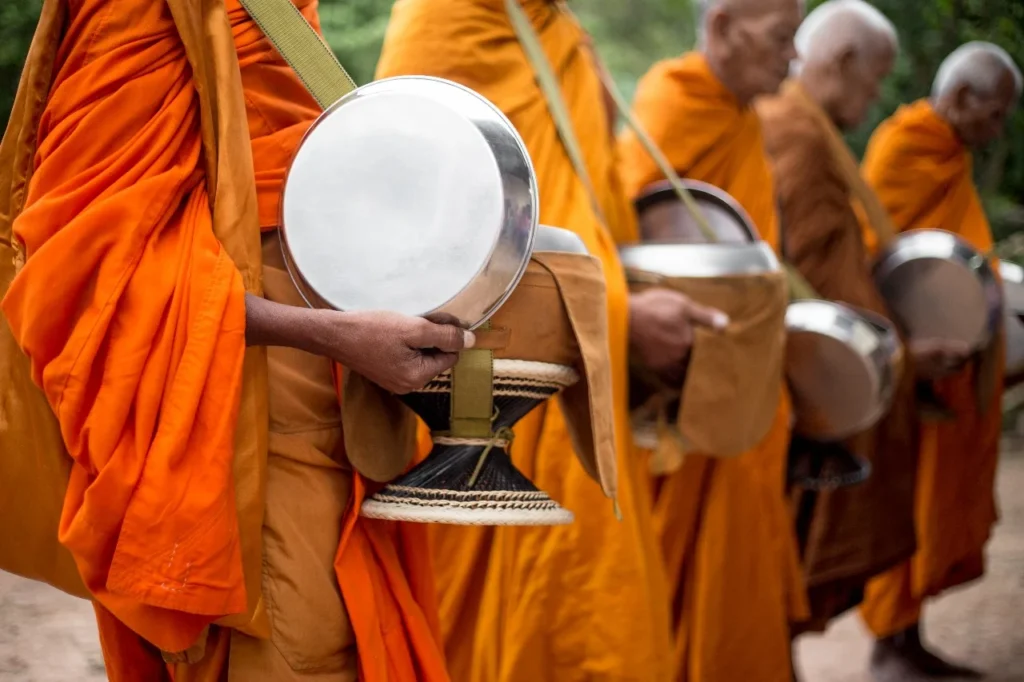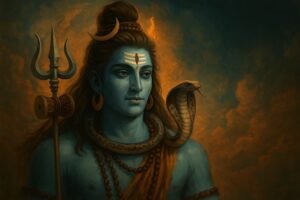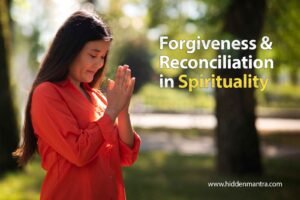Table of Contents
ToggleOn Saturday, 6th September 2025, millions of Buddhists across Asia, from India to China, Japan, Korea, and Vietnam, will gather to celebrate Ullambana, also known as the Festival of Ancestors. Deeply rooted in Buddhist teachings, this sacred occasion blends themes of filial piety, compassion, karma, and spiritual liberation.
Often referred to as the Ghost Festival in China and Obon in Japan, Ullambana is much more than a cultural ritual; it’s a time to honor the spirits of departed loved ones, release them from suffering, and perform good deeds on their behalf. Families light incense, offer food, and chant prayers, believing these acts help their ancestors attain peace and favorable rebirths.
What many don’t realize is that this deeply meaningful tradition originates from ancient Indian Buddhist scriptures, particularly the Ullambana Sutra, where the Buddha teaches the importance of helping our ancestors through acts of merit. Today, Ullambana continues to unite Buddhist communities across the world in remembrance, compassion, and gratitude.
Historical Background of Ullambana Festival
1.Origins and Meaning of Ullambana
The word Ullambana comes from the Sanskrit term meaning “hanging upside down,” which represents the intense suffering of beings trapped in the spirit world or preta realm (hungry ghost realm). The origins of this Buddhist festival trace back to the compassionate act of Maudgalyayana (also called Moginlin), a devoted disciple of the Buddha who sought to save his suffering mother.
As described in the Ullambana Sutra, the monk Maudgalyayana discovered through his deep spiritual insight that his late mother had taken rebirth as a hungry ghost, suffering greatly because of her past negative karma. Disturbed by her suffering, he sought guidance from Lord Buddha, who advised him to make offerings of food and prayers to monks during their retreat (Vassa). This act of compassion helped free his mother’s soul, establishing the foundation for the Ullambana Festival a time for honoring ancestors and relieving their suffering.
2.Cultural Evolution of Ullambana Festival
Over centuries, the Ullambana Festival spread from India across Asia through Buddhist missionaries and the Silk Road, blending with local customs and traditions.
Here’s a timeline of how Ullambana evolved across regions:
| Century | Region | Cultural Integration |
| 3rd BCE | India | Birth of the Ullambana Sutra and original rituals |
| 1st CE | China | Merged with the Ghost Festival |
| 6th CE | Japan | Became the Obon Festival, focused on ancestor worship |
| Later | Malaysia, Hong Kong | Adapted into local Buddhist ceremonies |
In various countries, Ullambana has been woven into traditions like:
Religious and Cultural Significance of the Hungry Ghost Festival
1.Core Spiritual Themes
Filial Piety in Buddhism: At the heart of the Hungry Ghost Festival lies the deep-rooted Buddhist value of filial piety a sacred duty to honor and care for one’s ancestors and deceased family members.
Compassion and Almsgiving: Acts of charity and generosity, such as donating food or essentials to monks and the needy, reflect Buddhist teachings on compassion. These actions are believed to generate spiritual merit.
Karma and Rebirth: The Hungry Ghost Festival emphasizes the Buddhist belief in karma and the ongoing cycle of birth, death, and rebirth. Through sacred rituals and offerings, devotees aim to relieve the suffering of spirits trapped in lower realms, helping them release negative karma and move toward a better existence.
2.Sacred Figures and Symbolic Roles
Maudgalyayana (Moggallana): A key figure in Buddhist lore, Maudgalyayana exemplifies filial love. His quest to save his mother from the hungry ghost realm is central to the origin story of the festival.
Ksitigarbha Bodhisattva: Revered as the guardian of the underworld, Ksitigarbha is often invoked during the festival to aid lost or wandering souls.
Sangha (Monastic Community): Buddhist monks and nuns play a pivotal role in the rituals. Offering food and support to the Sangha is believed to transfer merit to one’s ancestors, aiding their spiritual progress.
Traditional Rituals and Regional Practices
1.Rituals and Offerings
Spiritual Offerings and Ancestral Tribute: During the Hungry Ghost Festival, families set up elaborate displays of food and symbolic items to honor deceased loved ones and appease roaming spirits. These offerings often feature essentials like steamed rice, sweet treats, fresh tea, and seasonal fruits, along with ritualistic items such as incense, joss paper (symbolizing wealth), paper garments, and even paper replicas of electronics to ensure comfort in the afterlife.
Prayers and Chanting Ceremonies: Buddhist chants and sutra recitations are performed to bring peace to the departed and guide lost souls toward better rebirths.
2.Community and Cultural Celebrations
Feast Tables for the Dead: Many communities set up large communal tables with empty seats to invite hungry ghosts to dine peacefully. These offerings symbolize inclusion and respect for all spirits.
Traditional Performances: Cultural acts such as Chinese opera, shadow puppet shows, and spiritual plays are performed to entertain both humans and ghosts.
Lantern Floating Ceremonies: A serene ritual involving the release of lanterns onto water bodies symbolizes guiding spirits back to the afterlife in peace and light.
3.Acts of Compassion and Merit-Making
Giving to the Poor: Acts of kindness such as donating meals, clothing, or financial aid to the underprivileged are central to the spirit of the Hungry Ghost Festival. These selfless deeds are believed to generate positive karma and transfer spiritual merit to departed loved ones, aiding their journey toward a better rebirth.
Feeding the Monks: Offering alms to monks is equivalent to nourishing one’s ancestors spiritually, reflecting the Buddhist concept of interconnectedness across realms.
Transfer of Merit: Rituals and good deeds performed during this time are consciously dedicated to ancestors and hungry ghosts, helping elevate their souls to higher spiritual realms.
4.Regional Variations in Buddhist Celebrations
| Region | Distinctive Traditions |
| China | Burning joss paper in the streets, performing spiritual operas to appease spirits. |
| Japan | In Japan, Obon is marked by the graceful Bon Odori dances, glowing lanterns that light the way for ancestral spirits, and heartfelt visits to family graves to honor the departed. |
| Malaysia | Malaysia observes the season with vibrant food festivals, community performances, and charitable activities, all held in reverence for wandering spirits and ancestral blessings. |
| Hong Kong | Practices like “rice dispatch” to distribute food and peace flag runs for spiritual blessings. |
Ullambana Sutra and Buddhist Teachings on Compassion & Liberation
The Ullambana Sutra, a key Buddhist text, tells the powerful story of Maudgalyayana (Moggallāna) one of Buddha’s chief disciples who uses his spiritual powers to see that his deceased mother is suffering in the realm of hungry ghosts (Preta). Despite his deep compassion, he realizes that personal efforts alone aren’t enough to free her.
He turns to the Buddha, who advises him to make offerings to the monastic Sangha on the 15th day of the 7th lunar month a day now widely celebrated as Ullambana (or Ghost Festival). Through this act of merit-making, his mother is released from her suffering.
Key Buddhist Teachings from the Ullambana Sutra:
- Compassion in action: Buddhist teachings emphasize that no being is beyond redemption or compassion even those in lower realms.
- Power of merit transfer: Acts of generosity, rituals, and offerings made with sincere intent can create spiritual merit that benefits both the living and the deceased.
- Symbolic rituals for inner transformation: These Buddhist rituals aren’t just ceremonial they represent deeper practices of healing, letting go, and spiritual liberation.
Modern Observance of Ghost Festival 2025
1.Ghost Festival 2025 Date & Duration
The Ghost Festival 2025 will be observed on Saturday, 6 September 2025, aligning with the 15th day of the 7th lunar month. However, dates may vary slightly across regions due to differences in lunar calendar interpretations and local traditions.
2.Contemporary Ghost Festival Practices
In today’s eco-conscious world, many are embracing modern, eco-friendly Ghost Festival practices:
- Digital joss paper and LED lanterns are replacing traditional offerings to reduce pollution.
- Virtual temple ceremonies and live-streamed rituals are becoming popular, especially for global followers.
- Emphasis is growing on sustainable celebrations that honor ancestral traditions while respecting the environment.
Ullambana Festival in India
Historical and Spiritual Roots
India, the birthplace of Buddhism and the Ullambana Sutra, holds deep cultural and spiritual significance for the Ullambana Festival. Maudgalyayana’s journey to rescue his mother from the torments of the afterlife embodies the deep-rooted Indian principles of compassion, devotion to one’s parents, and the moral consequences of karma.
Key Practices in India
In India, Ullambana is observed through offerings to ancestors, meditation, and chanting Buddhist sutras. It shares strong similarities with Hindu rituals like Shraddh and Pitru Paksha, especially in the belief of transferring merit to seven generations of ancestors.
Highlights at a Glance
| Aspect | Details |
| Spiritual Focus | Ancestral respect, compassion, and karma purification |
| Main Rituals | Food offerings, lamp lighting, prayers, paper burning |
| Cultural Influence | Strong ties to Hindu practices like Shraddh and Pitru Paksha |
| Unique Element | Merit transfer across seven generations of ancestors |
| Social Impact | Encourages family unity and spiritual responsibility |
Buddhist Ancestor Festivals Across Countries
Different countries celebrate ancestor festivals with unique rituals rooted in Buddhist traditions. Here’s a brief comparison:
| Country | Festival Name | Key Rituals | Distinct Features |
| China | Yulanpen | Burning joss paper, traditional opera | Grand public gatherings and temple ceremonies |
| Japan | Obon | Bon Odori dances, visiting graves | Lantern floating on rivers to guide ancestral spirits |
| Malaysia | Hungry Ghost | Food offerings, street performances | Open-air Chinese opera and spiritual stage shows |
| Hong Kong | Yu Lan | Peace flag displays, rice donations | Blend of Taoist and Buddhist rituals with community events |
| India | Ullambana | Dana (charity), chanting, ancestral prayers | Strong interlink between Buddhist and Hindu observances |
Dates and Fascinating Facts about Ullambana Festival
Ullambana Festival 2025 Date: Saturday, 6 September 2025
What Does “Ullambana” Mean in Sanskrit?
The term “Ullambana” translates to “hanging upside down,” symbolizing the intense suffering of souls trapped in the spirit realm. The festival focuses on liberating ancestors from suffering through prayers and offerings.
Unique Cultural Traditions Worldwide:
- Japan: Floating lantern ceremonies symbolizing guiding spirits to peace
- China & Hong Kong: Traditional performances, symbolic food tributes, and ceremonial burning of joss paper.
- Vietnam: Shared community meals and ancestor memorials
Cultural Parallels:
Ullambana shares deep similarities with Pitru Paksha in Hinduism, where offerings are made to honor ancestors and gain blessings.
Eco-Friendly Trends in 2025:
- Digital joss paper apps to reduce smoke pollution
- Biodegradable paper offerings replacing traditional plastic-based items
- Temples and homes now use electronic and solar-powered lanterns to provide safe, eco-friendly lighting alternatives.
Safety and Sustainability Guidelines
Health & Safety Tips During Ullambana:
- Children should participate under adult supervision, especially near fire and incense
- Individuals with asthma or respiratory issues should avoid smoke-heavy rituals
- Always follow fire safety guidelines while burning joss paper or lighting candles
Eco-Friendly Celebration Tips:
- Opt for LED lanterns or reusable lights instead of open flames
- Participate in guided rituals at Buddhist temples for safer, organized ceremonies
- Choose eco-conscious materials and consider donating to the poor as an offering of merit
Conclusion
Ullambana is not just a festival; it’s a sacred opportunity to express gratitude, compassion, and spiritual connection across generations. On September 6, 2025, as we light lanterns, offer prayers, and reflect deeply, we honor our ancestors with both heart and intention.
This beautiful Buddhist tradition, rooted in ancient wisdom, reminds us that compassion is timeless, and our actions can bring peace to those who came before us.
Celebrate mindfully. Practice sustainably. Honor wholeheartedly.
For more insightful articles on Buddhist festivals, spiritual rituals, and meditative living, visit Hidden Mantra, your guide to conscious celebration and inner peace.








